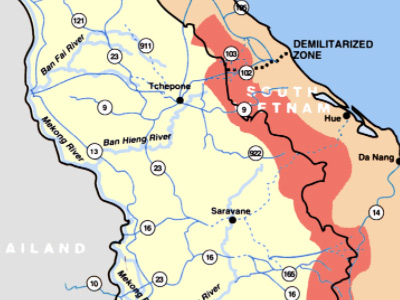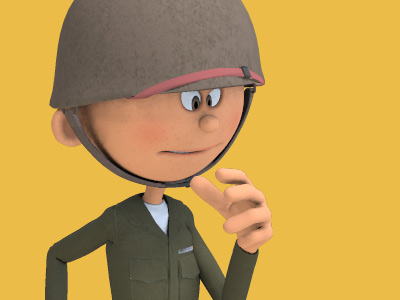Vietnam War (1955–1975)
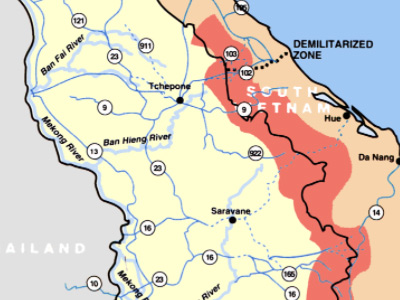
Vietnamization 1969–72
Nixon Doctrine / Vietnamization
U.S. President Richard Nixon began troop withdrawals in 1969. His plan, called the Nixon Doctrine, was to build up the ARVN, so that they could take over the defense of South Vietnam. The policy became known as "Vietnamization".
Nixon said in 1970 in an announcement, "I am tonight announcing plans for the withdrawal of an additional 150,000 American troops to be completed during the spring of next year. This will bring a total reduction of 265,500 men in our armed forces in Vietnam below the level that existed when we took office 15 months ago."
On 10 October 1969, Nixon ordered a squadron of 18 B-52s loaded with nuclear weapons to race to the border of Soviet airspace to convince the Soviet Union Soviet Union, officially the Union of Soviet Socialist Republics (USSR), was a transcontinental country that spanned much of Eurasia from 1922 to 1991. The Soviet Union fall process began with growing unrest in the Union's various constituent national republics developing into an incessant political and legislative conflict between them and the central government. Estonia was the first Soviet republic to declare state sovereignty inside the Union., in accord with the madman theory, that he was capable of anything to end the Vietnam War.
Soviet Union, officially the Union of Soviet Socialist Republics (USSR), was a transcontinental country that spanned much of Eurasia from 1922 to 1991. The Soviet Union fall process began with growing unrest in the Union's various constituent national republics developing into an incessant political and legislative conflict between them and the central government. Estonia was the first Soviet republic to declare state sovereignty inside the Union., in accord with the madman theory, that he was capable of anything to end the Vietnam War.
Nixon also pursued negotiations. Theater commander Creighton Abrams shifted to smaller operations, aimed at communist logistics, with better use of firepower and more cooperation with the ARVN. Nixon also began to pursue détente with the Soviet Union and rapprochement with China. This policy helped to decrease global tensions. Détente led to nuclear arms reduction on the part of both superpowers. But Nixon was disappointed that China and the Soviet Union continued to supply the North Vietnamese with aid. In September 1969, Ho Chi Minh died at age seventy-nine.
The anti-war movement was gaining strength in the United States The United States of America (U.S.A. or USA), commonly known as the United States (U.S. or US) or America, is a country in North America. It is the world's third-largest country by both land and total area. The United States shares land borders with Canada to its north and with Mexico to its south. The national capital is Washington, D.C., and the most populous city and financial center is New York City.. Nixon appealed to the "silent majority" of Americans who he said supported the war without showing it in public. But revelations of the My Lai Massacre, in which a U.S. Army platoon raped and killed civilians, and the 1969 "Green Beret Affair" where eight Special Forces soldiers, including the 5th Special Forces Group Commander, were arrested for the murder of a suspected double agent provoked national and international outrage.
The United States of America (U.S.A. or USA), commonly known as the United States (U.S. or US) or America, is a country in North America. It is the world's third-largest country by both land and total area. The United States shares land borders with Canada to its north and with Mexico to its south. The national capital is Washington, D.C., and the most populous city and financial center is New York City.. Nixon appealed to the "silent majority" of Americans who he said supported the war without showing it in public. But revelations of the My Lai Massacre, in which a U.S. Army platoon raped and killed civilians, and the 1969 "Green Beret Affair" where eight Special Forces soldiers, including the 5th Special Forces Group Commander, were arrested for the murder of a suspected double agent provoked national and international outrage.
Beginning in 1970, American troops were withdrawn from border areas where most of the fighting took place, and instead redeployed along the coast and interior, which is one reason why casualties in 1970 were less than half of 1969's totals.
Cambodia and Laos
Prince Norodom Sihanouk had proclaimed Cambodia neutral since 1955, but the communists used Cambodian soil as a base and Sihanouk tolerated their presence, because he wished to avoid being drawn into a wider regional conflict. Under pressure from Washington, however, he changed this policy in 1969. The Vietnamese communists were no longer welcome. President Nixon took the opportunity to launch a massive bombing campaign, called Operation Menu, against communist sanctuaries along the Cambodia/Vietnam border. Only five high-ranking Congressional officials were informed of Operation Menu.
In 1970, Prince Sihanouk was deposed by his pro-American prime minister Lon Nol. North Vietnam invaded Cambodia in 1970 at the request of Khmer Rouge deputy leader Nuon Chea. U.S. and ARVN forces launched an invasion into Cambodia to attack NVA and Viet Cong bases.
This invasion sparked nationwide U.S. protests as Nixon had promised to deescalate the American involvement. Four students were killed by National Guardsmen at Kent State University during a protest in Ohio, which provoked further public outrage in the United States. The reaction to the incident by the Nixon administration was seen as callous and indifferent, providing additional impetus for the anti-war movement. The U.S. Air Force continued to heavily bomb Cambodia in support of the Cambodian government as part of Operation Freedom Deal.
In 1971 the Pentagon Papers were leaked to The New York Times. The top-secret history of U.S. involvement in Vietnam, commissioned by the Department of Defense, detailed a long series of public deceptions on the part of the U.S. government. The Supreme Court ruled that its publication was legal.
The ARVN launched Operation Lam Son 719 in February 1971, aimed at cutting the Ho Chi Minh trail in Laos. The ostensibly neutral Laos had long been the scene of a civil war, pitting the Laotian government backed by the US against the Pathet Lao and its North Vietnamese allies. After meeting resistance, ARVN forces retreated in a confused rout. They fled along roads littered with their own dead. When they exhausted fuel supplies, soldiers abandoned their vehicles and attempted to barge their way on to American helicopters sent to evacuate the wounded. Many ARVN soldiers clung to helicopter skids in a desperate attempt to save themselves. U.S. aircraft had to destroy abandoned equipment, including tanks, to prevent them from falling into enemy hands. Half of the ARVN troops involved in the operation were either captured or killed. The operation was a fiasco and represented a clear failure of Vietnamization. As Karnow noted "the blunders were monumental… The (South Vietnamese) government's top officers had been tutored by the Americans for ten or fifteen years, many at training schools in the United States, yet they had learned little."
In 1971 Australia Australia, officially the Commonwealth of Australia, is a sovereign country comprising the mainland of the Australian continent, the island of Tasmania, and numerous smaller islands. In 1770, the British explorer James Cook mapped and claimed the east coast of Australia for Great Britain, and the First British Fleet arrived in 1788 to establish the penal colony of New South Wales. Australia sent many thousands of troops to fight for Britain during WWI. and New Zealand
Australia, officially the Commonwealth of Australia, is a sovereign country comprising the mainland of the Australian continent, the island of Tasmania, and numerous smaller islands. In 1770, the British explorer James Cook mapped and claimed the east coast of Australia for Great Britain, and the First British Fleet arrived in 1788 to establish the penal colony of New South Wales. Australia sent many thousands of troops to fight for Britain during WWI. and New Zealand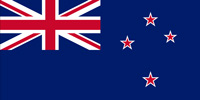 New Zealand is an island country in southwestern Pacific Ocean. It consists of two main landmasses - the North Island and the South Island - and over 700 smaller islands. In 1841, New Zealand became a colony within the British Empire. Subsequently, a series of conflicts between the colonial government and Māori tribes resulted in the alienation and confiscation of large amounts of Māori land. Reflecting this, New Zealand's culture is mainly derived from Māori and early British settlers. withdrew their soldiers. The U.S. troop count was further reduced to 196,700, with a deadline to remove another 45,000 troops by February 1972. As peace protests spread across the United States, disillusionment and ill-discipline grew in the ranks including increased drug use, "fragging" (the act of murdering the commander of a fighting unit) and desertions.
New Zealand is an island country in southwestern Pacific Ocean. It consists of two main landmasses - the North Island and the South Island - and over 700 smaller islands. In 1841, New Zealand became a colony within the British Empire. Subsequently, a series of conflicts between the colonial government and Māori tribes resulted in the alienation and confiscation of large amounts of Māori land. Reflecting this, New Zealand's culture is mainly derived from Māori and early British settlers. withdrew their soldiers. The U.S. troop count was further reduced to 196,700, with a deadline to remove another 45,000 troops by February 1972. As peace protests spread across the United States, disillusionment and ill-discipline grew in the ranks including increased drug use, "fragging" (the act of murdering the commander of a fighting unit) and desertions.
Vietnamization was again tested by the Easter Offensive of 1972, a massive conventional NVA invasion of South Vietnam. The NVA and Viet Cong quickly overran the northern provinces and in coordination with other forces attacked from Cambodia, threatening to cut the country in half. U.S. troop withdrawals continued. American airpower responded, beginning Operation Linebacker, and the offensive was halted. However, it became clear that without American airpower South Vietnam could not survive. The last remaining American ground troops were withdrawn by the end of March 1973; U.S. naval and air forces remained in the Gulf of Tonkin, as well as Thailand and Guam.
1972 election and Paris Peace Accords
The war was the central issue of the 1972 U.S. presidential election. Nixon's opponent, George McGovern, campaigned on a platform of withdrawal from Vietnam. Nixon's National Security Advisor, Henry Kissinger, continued secret negotiations with North Vietnam's Lê Đức Thọ. In October 1972, they reached an agreement.
However, South Vietnamese president Thieu demanded massive changes to the peace accord. When North Vietnam went public with the agreement's details, the Nixon administration claimed that the North was attempting to embarrass the president. The negotiations became deadlocked. Hanoi demanded new changes.
To show his support for South Vietnam and force Hanoi back to the negotiating table, Nixon ordered Operation Linebacker II, a massive bombing of Hanoi and Haiphong 18–29 December 1972. The offensive destroyed much of the remaining economic and industrial capacity of North Vietnam. Simultaneously Nixon pressured Thieu to accept the terms of the agreement, threatening to conclude a bilateral peace deal and cut off American aid.
On 15 January 1973, Nixon announced the suspension of offensive action against North Vietnam. The Paris Peace Accords on "Ending the War and Restoring Peace in Vietnam" were signed on 27 January 1973, officially ending direct U.S. involvement in the Vietnam War. A cease-fire was declared across North and South Vietnam. U.S. prisoners of war were released. The agreement guaranteed the territorial integrity of Vietnam and, like the Geneva Conference of 1954, called for national elections in the North and South. The Paris Peace Accords stipulated a sixty-day period for the total withdrawal of U.S. forces. "This article", noted Peter Church, "proved… to be the only one of the Paris Agreements which was fully carried out."
HISTORY
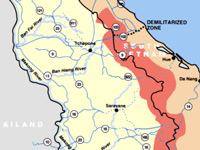
RESOURCES
This article uses material from the Wikipedia article "Vietnam War (1955–1975)", which is released under the Creative Commons Attribution-Share-Alike License 3.0.
© Stories Preschool. All Rights Reserved.
